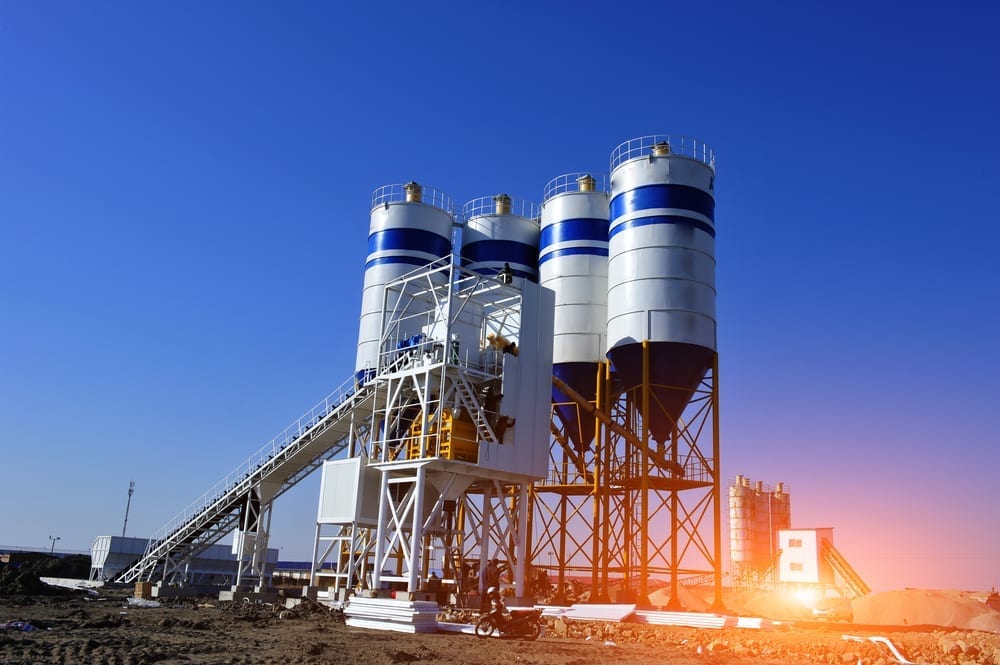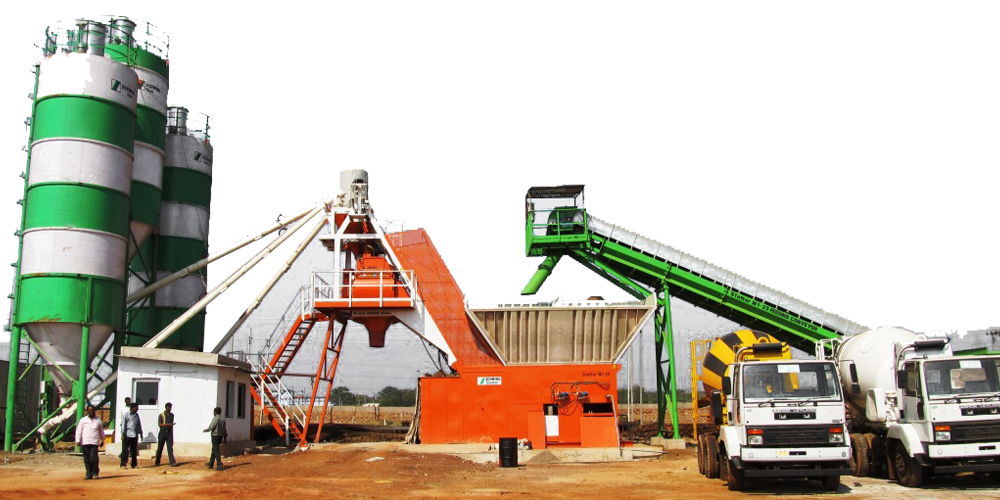In the world of construction, efficiency and cost-effectiveness are paramount. Concrete production forms the backbone of countless construction projects, and the key to achieving optimal results lies in the use of concrete batching plants. These sophisticated pieces of batching equipment are indispensable in the realm of construction machinery. In this comprehensive guide, we’ll delve into the world of concrete batching plants, exploring how they contribute to ready-mix concrete production, the intricacies of batch plant operation, and their impact on construction efficiency.
Table of Contents
- Introduction
- Understanding Concrete Batching Plants
- 2.1 The Role of Batching Equipment
- 2.2 Components of a Concrete Batching Plant
- Advantages of Using Concrete Batching Plants
- 3.1 Enhanced Concrete Mixing
- 3.2 Increased Efficiency
- Types of Concrete Batching Plants
- 4.1 Mobile vs. Stationary Batching Plants
- 4.2 Precast Concrete Batching Plants
- Batch Plant Technology
- 5.1 Batch Control Systems
- 5.2 Batch Automation
- Ensuring Concrete Plant Efficiency
- 6.1 Maintenance Practices
- 6.2 Environmental Impact
- Software Solutions for Batch Plants
- Cost-Effectiveness of Concrete Batching Plants
- 8.1 Reducing Material Wastage
- 8.2 Labor Efficiency
- Concrete Batching Plants in Action
- Future Trends in Batching Plant Technology
- 10.1 Sustainability Measures
- 10.2 Technological Advancements
- Conclusion
Introduction
Concrete production is the lifeblood of construction projects, and the use of concrete batching plants has revolutionized this essential industry. These plants offer a cost-effective solution that streamlines the entire process, from cement batching to aggregate batching, resulting in efficient ready-mix concrete.
Understanding Concrete Batching Plants
2.1 The Role of Batching Equipment
Concrete batching plants are sophisticated machinery designed for precise concrete mixing. They incorporate batching equipment to measure and combine cement, aggregates, and water accurately. This ensures consistent and high-quality concrete.
2.2 Components of a Concrete Batching Plant
A typical concrete batching plant consists of various components, including silos, conveyors, batchers, mixers, and control panels. Each component plays a crucial role in the concrete production process.
Advantages of Using Concrete Batching Plants

3.1 Enhanced Concrete Mixing
Concrete mixing in a batching plant is thorough and consistent, resulting in better homogeneity and strength. This is crucial for producing durable structures.
3.2 Increased Efficiency
Batch plant operation is highly efficient. It minimizes material wastage and reduces the reliance on manual labor, leading to significant cost savings.
Types of Concrete Batching Plants
4.1 Mobile vs. Stationary Batching Plants
Mobile concrete batching plants offer flexibility and are ideal for remote construction sites. In contrast, stationary plants are suited for large-scale projects where consistent production is essential.
4.2 Precast Concrete Batching Plants
Precast concrete manufacturing relies heavily on batching plants, ensuring the precise production of precast components.
Batch Plant Technology
5.1 Batch Control Systems
Modern batching plants are equipped with advanced batch control systems, which allow for precise monitoring and adjustment of the mixing process.
5.2 Batch Automation
Batch automation further enhances efficiency by automating many tasks, reducing the margin of error.
Ensuring Concrete Plant Efficiency
6.1 Maintenance Practices
Regular maintenance is key to the longevity of batching plants. Proper care minimizes downtime and ensures optimal performance.
6.2 Environmental Impact
Batching plants have an environmental impact. However, newer technologies focus on reducing this impact, making them more sustainable choices.
Software Solutions for Batch Plants
In today’s digital age, batch plant software provides real-time data and analytics, enabling better decision-making and control over the concrete production process.
Cost-Effectiveness of Concrete Batching Plants

8.1 Reducing Material Wastage
Batching plants minimize material wastage by precisely measuring and mixing only what is needed for each batch.
8.2 Labor Efficiency
The automation and efficiency of batching plants reduce labor requirements, which translates to substantial cost savings.
Concrete Batching Plants in Action
Explore real-world examples of how concrete batching plants have played a pivotal role in the success of various construction projects.
Future Trends in Batching Plant Technology
10.1 Sustainability Measures
As environmental concerns grow, the industry is moving towards more sustainable and eco-friendly batching plant solutions.
10.2 Technological Advancements
Keep an eye on emerging technologies that will further enhance the efficiency and effectiveness of concrete batching plants.
Overview
Concrete batching plants are indisputably a cost-effective solution for modern construction needs. They ensure the consistent production of high-quality concrete while reducing costs and environmental impact. Embracing the latest batch plant technology is the way forward for construction projects aiming for efficiency and sustainability.
Pros:
- Efficiency and Consistency:
- Concrete batching plants are highly efficient and ensure the consistency of concrete mixtures. They precisely measure and mix materials, resulting in a uniform and high-quality product, which is crucial for construction projects.
- Cost-Effective:
- Batching plants reduce material wastage, labor costs, and the need for manual mixing, making them a cost-effective solution for large-scale construction projects. They help optimize resource utilization, leading to cost savings.
- Customization:
- Batching plants offer customization options, allowing builders to tailor concrete mixes to specific project requirements. This versatility is essential for meeting diverse construction needs.
Cons:
- Environmental Impact:
- Batching plants can have a significant environmental impact due to their energy consumption, dust emissions, and water usage. However, newer technologies and sustainable practices are being adopted to mitigate these issues.
- Initial Investment:
- Setting up a concrete batching plant requires a substantial initial investment in equipment, facilities, and infrastructure. Small construction projects may find the upfront costs prohibitive.
- Maintenance and Downtime:
- Like all machinery, batching plants require regular maintenance to ensure optimal performance. Unscheduled downtime due to maintenance or equipment failures can disrupt construction schedules and lead to additional costs.
It’s important to note that while concrete batching plants have disadvantages, many of these issues can be mitigated through proper maintenance, the adoption of eco-friendly practices, and careful planning. The benefits often outweigh the drawbacks, especially for larger construction projects where efficiency and consistency are paramount.
FAQs (Frequently Asked Questions)
Q1: What is the environmental impact of batching plants?
A1: The environmental impact of batching plants is a significant concern. However, newer technologies focus on reducing this impact through better waste management and energy-efficient processes.
Q2: How do concrete batching plants enhance efficiency?
A2: Concrete batching plants enhance efficiency by automating the mixing process, reducing material wastage, and minimizing the reliance on manual labor.
Q3: Are there different types of concrete batching plants?
A3: Yes, there are various types of concrete batching plants, including mobile and stationary plants, as well as those specialized for precast concrete production.
Q4: What are batch control systems in concrete batching plants?
A4: Batch control systems in concrete batching plants are advanced technologies that allow for precise monitoring and adjustment of the mixing process.
Q5: What is the future of batching plant technology?
A5: The future of batching plant technology lies in sustainability measures and technological advancements, aiming for more eco-friendly and efficient operations.
